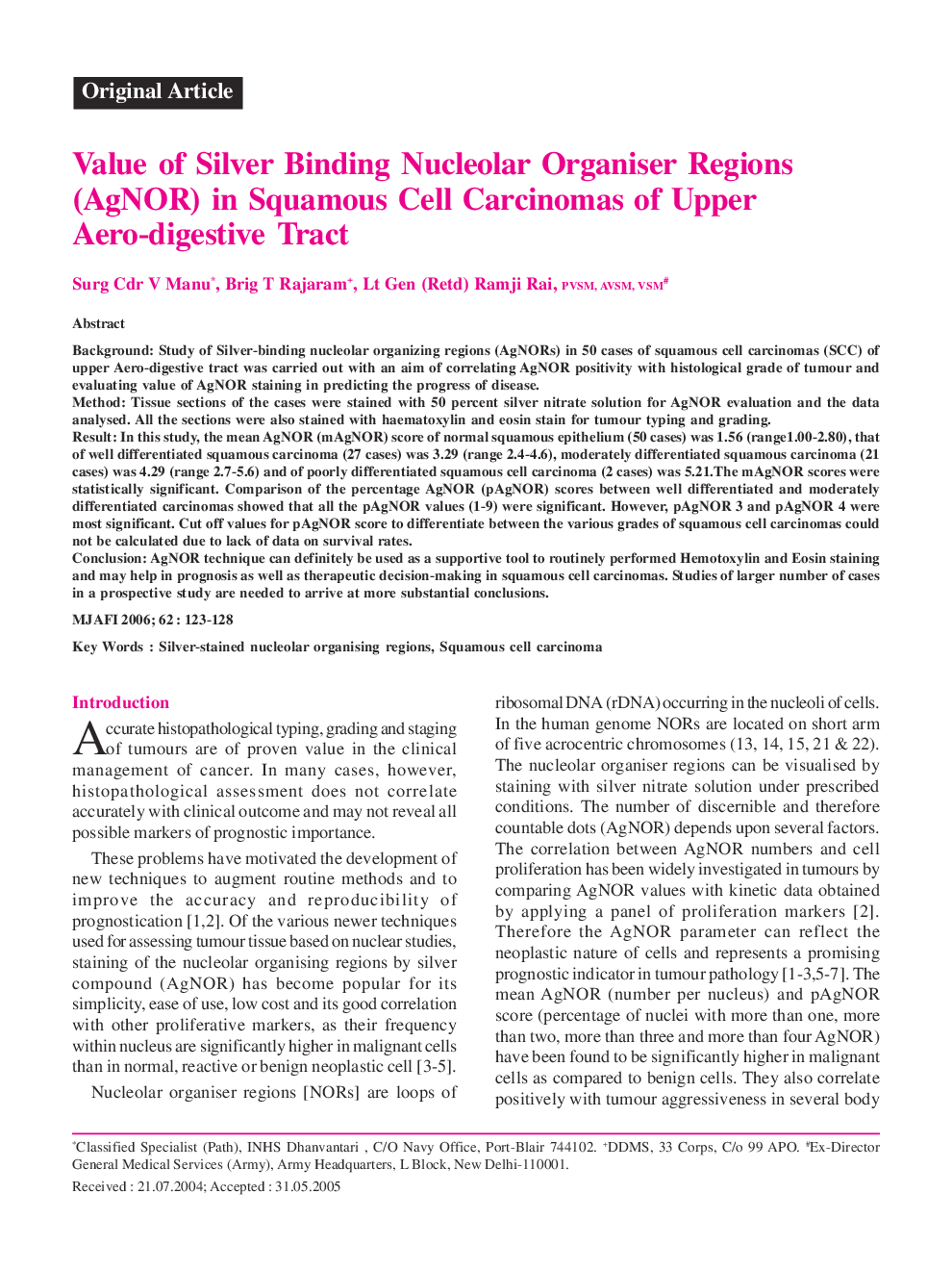| Article ID | Journal | Published Year | Pages | File Type |
|---|---|---|---|---|
| 3162305 | Medical Journal Armed Forces India | 2006 | 6 Pages |
BackgroundStudy of Silver-binding nucleolar organizing regions (AgNORs) in 50 cases of squamous cell carcinomas (SCC) of upper Aero-digestive tract was carried out with an aim of correlating AgNOR positivity with histological grade of tumour and evaluating value of AgNOR staining in predicting the progress of disease.MethodsTissue sections of the cases were stained with 50 percent silver nitrate solution for AgNOR evaluation and the data analysed. All the sections were also stained with haematoxylin and eosin stain for tumour typing and grading.ResultsIn this study, the mean AgNOR (mAgNOR) score of normal squamous epithelium (50 cases) was 1.56 (range1.00-2.80), that of well differentiated squamous carcinoma (27 cases) was 3.29 (range 2.4-4.6), moderately differentiated squamous carcinoma (21 cases) was 4.29 (range 2.7-5.6) and of poorly differentiated squamous cell carcinoma (2 cases) was 5.21. The mAgNOR scores were statistically significant. Comparison of the percentage AgNOR (pAgNOR) scores between well differentiated and moderately differentiated carcinomas showed that all the pAgNOR values (1-9) were significant. However, pAgNOR 3 and pAgNOR 4 were most significant. Cut off values for pAgNOR score to differentiate between the various grades of squamous cell carcinomas could not be calculated due to lack of data on survival rates.ConclusionAgNOR technique can definitely be used as a supportive tool to routinely performed Hemotoxylin and Eosin staining and may help in prognosis as well as therapeutic decision-making in squamous cell carcinomas. Studies of larger number of cases in a prospective study are needed to arrive at more substantial conclusions.
